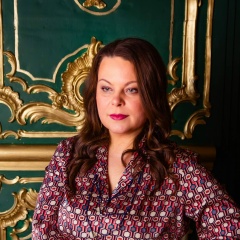ЧТО ОБЩЕГО МЕЖДУ МАРКЕТИНГОМ И ОТНОШЕНИЯМИ?
В отношениях четко прослеживаются те же законы, что и в маркетинге. Здесь тоже есть "товар" и сопутствующие ему "услуги", и чем лучше простроен маркетинг, тем быстрее достигается результат.
Смотрите, есть человек, он же товар/услуга. Будем разбирать на примере девушек (феминистки насторожились). Для парней то же самое практически, но писать в обе стороны муторно.
Итак, есть девушка и у нее есть четкая задача, например, найти мужчину и выйти замуж. Разбираем немного более расширенную версию маркетинга. В реальной жизни многие этапы, к сожалению, попросту отсутствуют.
Этап № 1 - принятие решения о том, что отношения вообще нужны. Этап важный, поскольку без четкого решения "да, я хочу" успешный результат вряд ли гарантирован.
Этап № 2 - исследование аватара клиента. Исследуем целевую аудиторию, составляем аватар клиента (потенциальный партнер), где ходит, что любит, какие интересы, какую музыку слушает, какие фильмы смотрит, какие книги читает, с какими проблемами в жизни сталкивается, и т.п.
Этап № 3 - выделение основных проблем, с которыми сталкивается наш аватар. Здесь нужно понять и ответить себе на вопрос, что важно клиенту, почему он не может жить без нормальных отношений с девушкой, с какими проблемами он сталкивается каждый день в отсутствии ее.
Этап № 4 - составление рабочих гипотез на основе полученных данных. Здесь помогает шаманская техника "НАХУА", о которой я когда-то уже писал. Вы задаете себе вопрос, "а нахуа ему это нужно? чем я могу улучшить его или ее жизнь?". Обычно здесь происходит одна из главных ошибок в маркетинге отношений. Вопрос "нахуа" просто игнорируется и заменяется обычным "ага-рефлексом", по принципу "какой-классный-хочу-хочу-хочу".
Этап № 5 - подготовительный этап, он же "упаковка". Поскольку отношения - "дело тонкое", здесь желательно рабочую гипотезу перед тестированием хорошенько упаковать. Речь идет даже не об одежде и внешней атрибутике (хотя и это тоже немало важный аспект), а больше о конгруэнтности в выборе ситуации тестирования гипотез.
Этап № 6 - тестирование самих гипотез. Здесь потихоньку можно проверять свои догадки, на что клюнет рыба. В диалоге или на практике проверить, реагирует ли покупатель на те или иные вбросы ("а я готовить люблю", "обожаю книги Джека Лондона", "если бы я была на ее месте, я бы так не поступила", "нет, я секс люблю, мне 2 раза в неделю недостаточно", "а мне всегда говорили, что я буду хорошей мамой", и т.д.). Здесь важно быть в раппорте с потенциальным клиентом и хорошо ловить обратную связь. И самый важный момент на этом этапе - направление контакта. Ни в коем случае здесь нельзя продавать себя (товар/услугу) в лоб. Здесь надо по умному. Если гипотеза сработала, то клиент сам к вам обратиться и захочет купить.
Этап № 7 - предпродажа, он же - тестовый период. Прежде чем произойдет основная продажа (а здесь мы изначально за нее взяли пункт "выйти замуж"), клиенту нужно предоставить некий тестовый период, чтобы он убедился, что товар/услуга ему подходит и он сделал правильный выбор. У всех тестовый период проходит по-разному. Это может быть одно-два свидания или 2-3 года совместной жизни в гражданском браке. Здесь важно показать все достоинства продаваемого товара/услуги. Не забываем про вбросы и направление контакта.
Этап № 8 - основная продажа. Если все прошло хорошо и клиент доволен, можно делать основную продажу. У клиента на этот момент должна сформироваться мысль в голове типа "как же я до сих пор жил без нее все это время?".
Этап № 9 - оформление документов и формализация всех процессов. Тоже важный этап, если это сделать, возвратов будет меньше (по последним данным их сейчас порядка 50%).
Этап № 10 - поиск новых потребностей и допродажи. Основная продажа совершена, теперь можно думать и о допродажах. Ребенок, маму в дом, календарь успешного человека, он же - "после 12 домой можешь не возвращаться", пачка друзей и подруг в придачу, и т.д. и т.п. Иногда этапы 8 и 10 могут меняться местами.
На каждом из этапов существуют свои конверсии. Чем лучше будет подготовка на первых этапах, тем быстрее и с большей конверсией произойдет продажа.
Изучаем, практикуемся, внедряем))
UPD: Этап №11 - практика кайдзен. Конкуренцию никто не отменял, поэтому нужно следить за тем, чтобы продукт был лучшим на рынке (помним о теории ограниченной рациональности), по крайней мере из того, что клиенту доступно. Постоянные улучшения, доработки, что-то новое.
В отношениях четко прослеживаются те же законы, что и в маркетинге. Здесь тоже есть "товар" и сопутствующие ему "услуги", и чем лучше простроен маркетинг, тем быстрее достигается результат.
Смотрите, есть человек, он же товар/услуга. Будем разбирать на примере девушек (феминистки насторожились). Для парней то же самое практически, но писать в обе стороны муторно.
Итак, есть девушка и у нее есть четкая задача, например, найти мужчину и выйти замуж. Разбираем немного более расширенную версию маркетинга. В реальной жизни многие этапы, к сожалению, попросту отсутствуют.
Этап № 1 - принятие решения о том, что отношения вообще нужны. Этап важный, поскольку без четкого решения "да, я хочу" успешный результат вряд ли гарантирован.
Этап № 2 - исследование аватара клиента. Исследуем целевую аудиторию, составляем аватар клиента (потенциальный партнер), где ходит, что любит, какие интересы, какую музыку слушает, какие фильмы смотрит, какие книги читает, с какими проблемами в жизни сталкивается, и т.п.
Этап № 3 - выделение основных проблем, с которыми сталкивается наш аватар. Здесь нужно понять и ответить себе на вопрос, что важно клиенту, почему он не может жить без нормальных отношений с девушкой, с какими проблемами он сталкивается каждый день в отсутствии ее.
Этап № 4 - составление рабочих гипотез на основе полученных данных. Здесь помогает шаманская техника "НАХУА", о которой я когда-то уже писал. Вы задаете себе вопрос, "а нахуа ему это нужно? чем я могу улучшить его или ее жизнь?". Обычно здесь происходит одна из главных ошибок в маркетинге отношений. Вопрос "нахуа" просто игнорируется и заменяется обычным "ага-рефлексом", по принципу "какой-классный-хочу-хочу-хочу".
Этап № 5 - подготовительный этап, он же "упаковка". Поскольку отношения - "дело тонкое", здесь желательно рабочую гипотезу перед тестированием хорошенько упаковать. Речь идет даже не об одежде и внешней атрибутике (хотя и это тоже немало важный аспект), а больше о конгруэнтности в выборе ситуации тестирования гипотез.
Этап № 6 - тестирование самих гипотез. Здесь потихоньку можно проверять свои догадки, на что клюнет рыба. В диалоге или на практике проверить, реагирует ли покупатель на те или иные вбросы ("а я готовить люблю", "обожаю книги Джека Лондона", "если бы я была на ее месте, я бы так не поступила", "нет, я секс люблю, мне 2 раза в неделю недостаточно", "а мне всегда говорили, что я буду хорошей мамой", и т.д.). Здесь важно быть в раппорте с потенциальным клиентом и хорошо ловить обратную связь. И самый важный момент на этом этапе - направление контакта. Ни в коем случае здесь нельзя продавать себя (товар/услугу) в лоб. Здесь надо по умному. Если гипотеза сработала, то клиент сам к вам обратиться и захочет купить.
Этап № 7 - предпродажа, он же - тестовый период. Прежде чем произойдет основная продажа (а здесь мы изначально за нее взяли пункт "выйти замуж"), клиенту нужно предоставить некий тестовый период, чтобы он убедился, что товар/услуга ему подходит и он сделал правильный выбор. У всех тестовый период проходит по-разному. Это может быть одно-два свидания или 2-3 года совместной жизни в гражданском браке. Здесь важно показать все достоинства продаваемого товара/услуги. Не забываем про вбросы и направление контакта.
Этап № 8 - основная продажа. Если все прошло хорошо и клиент доволен, можно делать основную продажу. У клиента на этот момент должна сформироваться мысль в голове типа "как же я до сих пор жил без нее все это время?".
Этап № 9 - оформление документов и формализация всех процессов. Тоже важный этап, если это сделать, возвратов будет меньше (по последним данным их сейчас порядка 50%).
Этап № 10 - поиск новых потребностей и допродажи. Основная продажа совершена, теперь можно думать и о допродажах. Ребенок, маму в дом, календарь успешного человека, он же - "после 12 домой можешь не возвращаться", пачка друзей и подруг в придачу, и т.д. и т.п. Иногда этапы 8 и 10 могут меняться местами.
На каждом из этапов существуют свои конверсии. Чем лучше будет подготовка на первых этапах, тем быстрее и с большей конверсией произойдет продажа.
Изучаем, практикуемся, внедряем))
UPD: Этап №11 - практика кайдзен. Конкуренцию никто не отменял, поэтому нужно следить за тем, чтобы продукт был лучшим на рынке (помним о теории ограниченной рациональности), по крайней мере из того, что клиенту доступно. Постоянные улучшения, доработки, что-то новое.
WHAT IS COMMON BETWEEN MARKETING AND RELATIONS?
In relationships, the same laws are clearly visible as in marketing. Here, too, there is a “product” and related “services”, and the better the marketing is arranged, the faster the result is achieved.
Look, there is a person, he is a product / service. We will analyze on the example of girls (feminists were wary). It’s practically the same for guys, but writing in both directions is dreary.
So, there is a girl and she has a clear task, for example, to find a man and get married. Parsing a slightly more advanced version of marketing. In real life, many stages, unfortunately, are simply absent.
Stage number 1 - the decision that the relationship is generally needed. This is an important stage, since without a clear yes, I want solution, a successful result is hardly guaranteed.
Stage number 2 - research avatar client. We study the target audience, compile the client’s avatar (potential partner), where he walks, what he loves, what interests, what music he listens to, what films he watches, what books he reads, what problems he faces in life, etc.
Stage number 3 - highlighting the main problems that our avatar faces. Here you need to understand and answer yourself the question of what is important for the client, why he cannot live without normal relations with the girl, what problems he faces every day in the absence of her.
Stage No. 4 - compilation of working hypotheses based on the data obtained. The Nahua shamanic technique that I once wrote about helps here. You ask yourself the question, “What the hell does he need? How can I improve his or her life?” Usually, one of the main mistakes in relationship marketing happens here. The question "nahua" is simply ignored and replaced by the usual "aga-reflex", on the principle of "what-cool-want-want-want-want."
Stage number 5 - the preparatory stage, it is also "packaging". Since relationships are a "delicate matter", it is advisable to pack the working hypothesis well before testing. This is not even about clothing and external paraphernalia (although this is also an important aspect), but more about congruency in the choice of a hypothesis testing situation.
Stage 6 - testing the hypotheses themselves. Here you can slowly check your guesses about what the fish will bite on. In a dialogue or in practice, check whether the buyer responds to certain stuffing (“I like cooking,” “I love Jack London's books,” “if I were in her place, I wouldn’t do that”, “no, I I love sex, I’m not enough 2 times a week "," but they always told me that I will be a good mom, "etc.). It is important to be in a rapport with a potential client and catch the feedback well. And the most important point at this stage is the direction of contact. In no case can you sell yourself (a product / service) forehead. It’s smart here. If the hypothesis worked, then the client will contact you and will want to buy it.
Stage number 7 - pre-sale, it is also a test period. Before the main sale occurs (and here we initially took the “marry” item for her), the client needs to be given a certain test period so that he is convinced that the product / service is suitable for him and he made the right choice. All test periods are different. This may be one or two dates or 2-3 years of marriage together in a civil marriage. It is important to show all the advantages of the goods / services being sold. Do not forget about the stuffing and the direction of contact.
Stage number 8 - the main sale. If everything went well and the customer is satisfied, you can make the main sale. The client at this moment should form an idea in his head like "how have I still lived without her all this time?"
Stage number 9 - paperwork and formalization of all processes. Also an important stage, if this is done, there will be fewer returns (according to the latest data, there are now about 50% of them).
Stage number 10 - the search for new needs and additional sales. The main sale is complete, now you can think about the resale. A child, a mother in the house, a calendar of a successful person, he is “after 12 you can not return home”, a pack of friends and girlfriends in addition, etc. etc. Sometimes stages 8 and 10 can change places.
Each stage has its own conversions. The better the preparation in the first stages, the faster and with greater conversion the sale will happen.
We study, practice, implement))
UPD: Stage 11 is kaizen practice. No one has canceled the competition, so you need to ensure that the product is the best on the market (remember the theory of limited rationality), at least from what is available to the client. Constant improvements, improvements, something new.
In relationships, the same laws are clearly visible as in marketing. Here, too, there is a “product” and related “services”, and the better the marketing is arranged, the faster the result is achieved.
Look, there is a person, he is a product / service. We will analyze on the example of girls (feminists were wary). It’s practically the same for guys, but writing in both directions is dreary.
So, there is a girl and she has a clear task, for example, to find a man and get married. Parsing a slightly more advanced version of marketing. In real life, many stages, unfortunately, are simply absent.
Stage number 1 - the decision that the relationship is generally needed. This is an important stage, since without a clear yes, I want solution, a successful result is hardly guaranteed.
Stage number 2 - research avatar client. We study the target audience, compile the client’s avatar (potential partner), where he walks, what he loves, what interests, what music he listens to, what films he watches, what books he reads, what problems he faces in life, etc.
Stage number 3 - highlighting the main problems that our avatar faces. Here you need to understand and answer yourself the question of what is important for the client, why he cannot live without normal relations with the girl, what problems he faces every day in the absence of her.
Stage No. 4 - compilation of working hypotheses based on the data obtained. The Nahua shamanic technique that I once wrote about helps here. You ask yourself the question, “What the hell does he need? How can I improve his or her life?” Usually, one of the main mistakes in relationship marketing happens here. The question "nahua" is simply ignored and replaced by the usual "aga-reflex", on the principle of "what-cool-want-want-want-want."
Stage number 5 - the preparatory stage, it is also "packaging". Since relationships are a "delicate matter", it is advisable to pack the working hypothesis well before testing. This is not even about clothing and external paraphernalia (although this is also an important aspect), but more about congruency in the choice of a hypothesis testing situation.
Stage 6 - testing the hypotheses themselves. Here you can slowly check your guesses about what the fish will bite on. In a dialogue or in practice, check whether the buyer responds to certain stuffing (“I like cooking,” “I love Jack London's books,” “if I were in her place, I wouldn’t do that”, “no, I I love sex, I’m not enough 2 times a week "," but they always told me that I will be a good mom, "etc.). It is important to be in a rapport with a potential client and catch the feedback well. And the most important point at this stage is the direction of contact. In no case can you sell yourself (a product / service) forehead. It’s smart here. If the hypothesis worked, then the client will contact you and will want to buy it.
Stage number 7 - pre-sale, it is also a test period. Before the main sale occurs (and here we initially took the “marry” item for her), the client needs to be given a certain test period so that he is convinced that the product / service is suitable for him and he made the right choice. All test periods are different. This may be one or two dates or 2-3 years of marriage together in a civil marriage. It is important to show all the advantages of the goods / services being sold. Do not forget about the stuffing and the direction of contact.
Stage number 8 - the main sale. If everything went well and the customer is satisfied, you can make the main sale. The client at this moment should form an idea in his head like "how have I still lived without her all this time?"
Stage number 9 - paperwork and formalization of all processes. Also an important stage, if this is done, there will be fewer returns (according to the latest data, there are now about 50% of them).
Stage number 10 - the search for new needs and additional sales. The main sale is complete, now you can think about the resale. A child, a mother in the house, a calendar of a successful person, he is “after 12 you can not return home”, a pack of friends and girlfriends in addition, etc. etc. Sometimes stages 8 and 10 can change places.
Each stage has its own conversions. The better the preparation in the first stages, the faster and with greater conversion the sale will happen.
We study, practice, implement))
UPD: Stage 11 is kaizen practice. No one has canceled the competition, so you need to ensure that the product is the best on the market (remember the theory of limited rationality), at least from what is available to the client. Constant improvements, improvements, something new.

У записи 69 лайков,
5 репостов,
1930 просмотров.
5 репостов,
1930 просмотров.
Эту запись оставил(а) на своей стене Роман Шарафутдинов


























































![Стас Однолетков -=[strast]=- Стас Однолетков -=[strast]=-](https://sun9-50.vkuserphoto.ru/s/v1/ig2/BQKIUfD3kthNCNNY9BS69xiPt_GjwVRhAU8D64L6gfeFjcmrTqYrLAC9NKgCppVxwhm79Mi5RypIHhjSHOhQK2uy.jpg?quality=95&crop=347,544,400,400&as=32x32,48x48,72x72,108x108,160x160,240x240,360x360&ava=1&cs=200x200)












